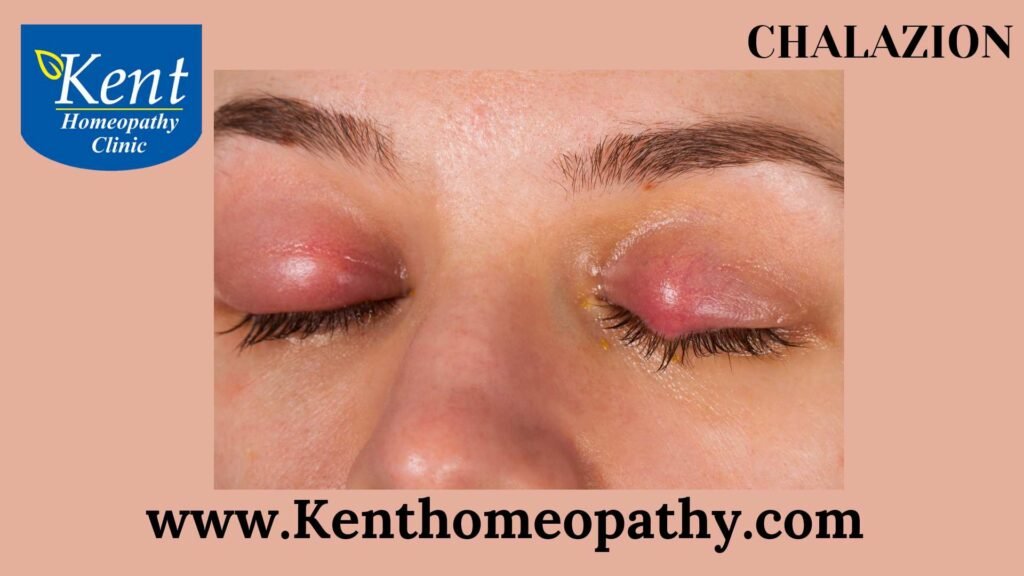Chalazion

A chalazion is a small, non-infectious lump or cyst that forms within the eyelid. It develops when there is a blockage in one of the small oil glands (meibomian glands) located in the eyelid, leading to the accumulation of oil and swelling. Chalazia are generally painless but can cause discomfort due to their location. Understanding the symptoms, causes, and types of chalazia is essential for proper diagnosis and management.
Symptoms:
- Eyelid Swelling: Chalazia typically present as a painless, localized swelling on the eyelid.
- Tenderness: The affected area may be tender to the touch.
- Redness: The eyelid over the chalazion can appear red or inflamed.
- Blurred Vision: If the chalazion is large enough, it may cause temporary blurred vision or distortion.
Causes:
- Blocked Oil Glands: The most common cause of chalazia is the blockage of meibomian glands, which produce oil to lubricate the eye and prevent tears from evaporating.
- Bacterial Infection: While chalazia are not caused by bacterial infections, they can
sometimes develop as a result of a previous stye (hordeolum) that was caused by a bacterial infection.
- Chronic Blepharitis: Inflammation of the eyelid margins, known as blepharitis, can contribute to the development of chalazia.
- Seborrhea: Individuals with seborrheic dermatitis, a skin condition characterized by oily, flaky skin, may be more prone to chalazia.
- Poor Eyelid Hygiene: Inadequate cleansing of the eyelids may contribute to the accumulation of debris and the development of chalazia.
Types:
- External Chalazion: This is the more common type and occurs on the outer part of the eyelid.
- Internal Chalazion: Internal chalazia develop on the inner side of the eyelid and can cause more significant discomfort due to their proximity to the eye.
Chalazia often resolve on their own with home care, and surgical intervention is typically reserved for cases where other treatments are ineffective. It’s crucial to avoid squeezing or attempting to pop a chalazion, as this can lead to complications and the potential for scarring. If a chalazion is causing persistent symptoms or affecting vision, consulting with an eye care professional for proper evaluation and guidance is recommended.
Contact to know more
Contact
Timings
Monday to Saturday:
11:00 AM to 02:30 PM
06:30 PM to 09:00 PM
